First, a few PSAs:
- This blog site now uses SSL, an encryption technology that furnishes web security. You can tell because, if you are using the Google Chrome browser (and Mozilla’s Firefox, too, I believe), there is now a green padlock icon and the word ‘Secure‘ at the left of the address bar. I’m not sure what Internet Explorer displays, but, regardless of the browser, the web address now begins with https instead of http. I spent the better part of the last two weeks tending to this task, along with updating some other things behind the scenes. Now that Google is happy with me, I hope it will provide some sense of security for you, too!
- Not only did I implement SSL on this site, but also on my English-learners’ podcast site, www.SlowAmericanEnglish.net. Give it a look!
- Lastly, I totally reworked my photography website, www.KomnataChista.com, something I’ve had on my to-do list for quite some time. Check it out and let me know what you think. It’s one of those things I’ll add to from time to time, but I consider it complete as it stands for now. At the bottom of that webpage, you’ll see a link to my stock photos on Alamy.com. Oh, and BTW, it’s also SSL!
- And don’t forget to BUY MY BOOKS!
So I have begun what I hope is a series of excursions to, and, therefore, blog posts about, Old West ghost towns. First stop: Dearfield. I know that “ghost town” probably conjures up images in your heads of abandoned mining towns or shootouts at the OK Corral. But that isn’t/wasn’t what Dearfield is/was about.
Dearfield lies about 30 miles east of Greeley, Colorado. Both are northeast of where I live and about an hour plus into the high plains. Greeley, incidentally, was named after Horace Greeley, the 19th-century author, statesman and founder/editor of the New-York Tribune. He is generally credited with coining or at least popularizing the phrase, “Go West, young man”. Interestingly, the town of Greeley was founded as an experimental utopian society in 1869 called Union Colony. When that didn’t pan out, they changed the name to Greeley around 1886.
But back to Dearfield. It was established by one Oliver Toussaint Jackson (1862-1948), or “OT” as they used to call him. He was an African-American entrepreneur with successful restaurants and catering businesses in Denver and Boulder. His aim was to establish a black agricultural colony, and so he did in 1910.
On first approach on Colorado Highway 34, there is a sign:
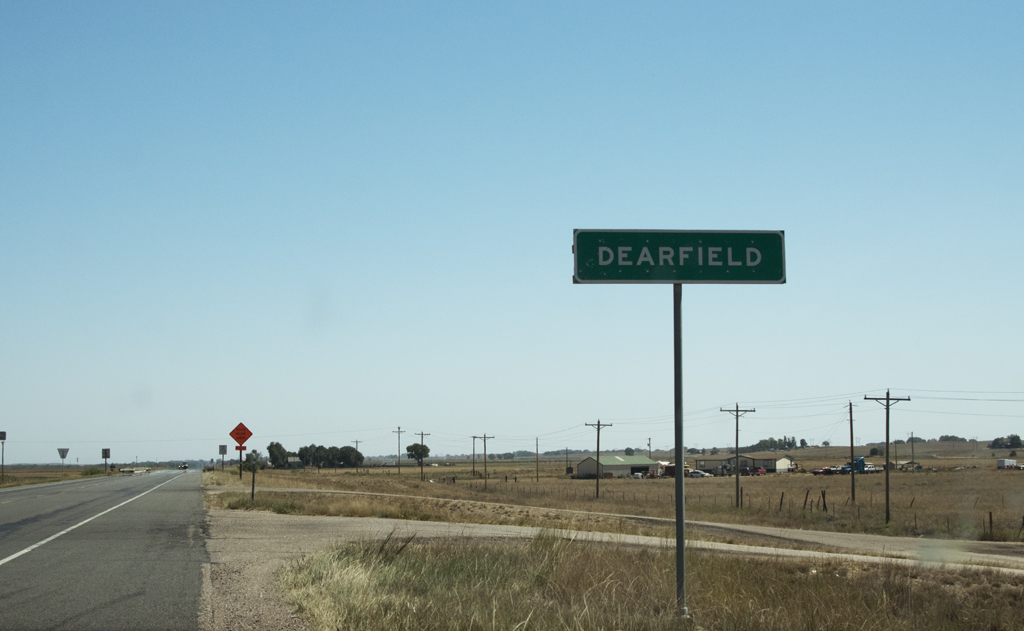
In this photo you can get the idea of how extremely FLAT eastern Colorado and the Great Plains are. And it was very hot, dry and dusty that day, a condition that’s typical. Of course, in winter there is blowing snow and wind. And this is also where the thunderstorms land after conveniently passing over Denver (and my town) from the Rockies. It’s the beginning of Tornado Alley, which stretches into Nebraska and Kansas and parts beyond. I’m awed that anyone lives out there.
But Jackson’s group did. Here’s an excerpt from the website BlackPast.org which sums up Dearfield’s history in a nutshell:
On May 5, 1910 after four years of searching for a location that would accommodate two hundred families, Oliver Toussaint Jackson established Dearfield, a black agricultural colony on the arid high plains of Colorado. Jackson managed to gain the support of the Colorado chapter of the National Negro Business League, but the group withdrew their support after Booker T. Washington, the national president, refused to endorse the project. Unable to acquire another backer for the project Jackson and a few brave families began the settlement on their own.
According to Jackson, during the first winter in Dearfield only two of the seven families “had wooden houses and the suffering was intense.” He said “buffalo chips and sagebrush was our chief fuel. Three of our horses died from starvation and the other three were too weak to pull the empty wagon.”
By 1915 Dearfield had gone from seven families living in tents, dugouts and caves in the hillside to twenty-seven families living in wooden cabins. The next five years would see the settlement grow to a population of seventy with their own school, restaurant, grocery store, boarding house, and two churches.
Unfortunately the end of World War I in 1918 also brought an end to the settlement’s sturdy growth. As the demand for their crops dropped the families began to default on their mortgages and equipment loans. One by one the families sold their farms until there were only twelve people living in Dearfield in 1940. The last resident was Jackson’s niece Jenny Jackson, who lived there until her death in 1973.
Today the Black American West Museum and Heritage Center is working on the preservation of the town.
So here is what you can see of Dearfield if you stand close to the highway sign:
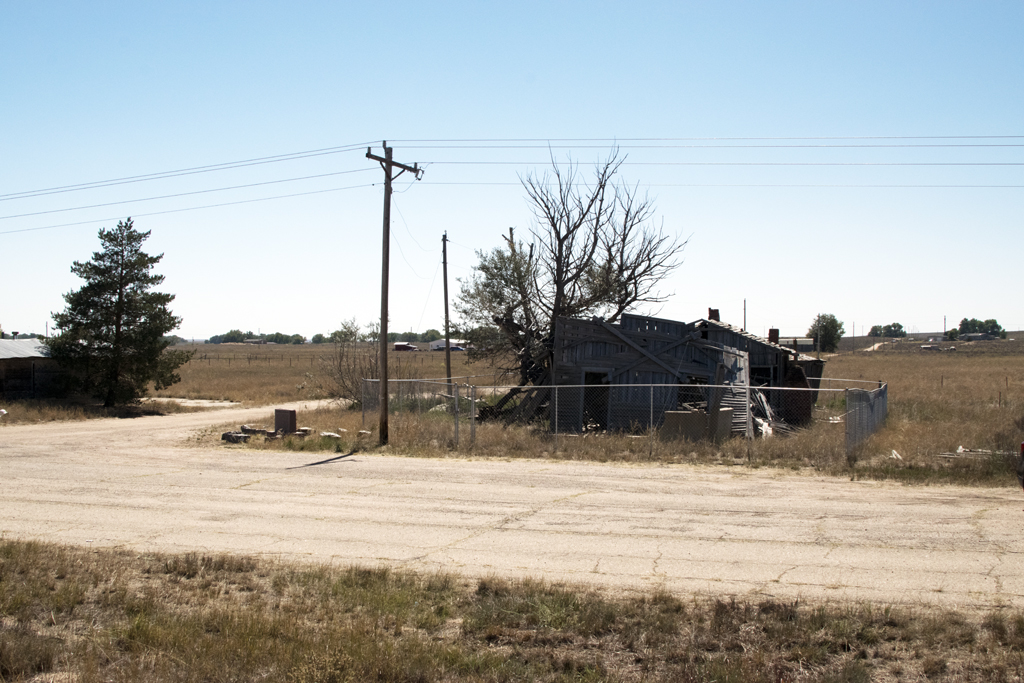
There are maybe three or four buildings remaining and they are in very bad shape. They are purportedly the shells of a diner, a gas station and Jackson’s home, but I couldn’t tell one from the other because of their condition. The one with the fence around it is literally falling down.
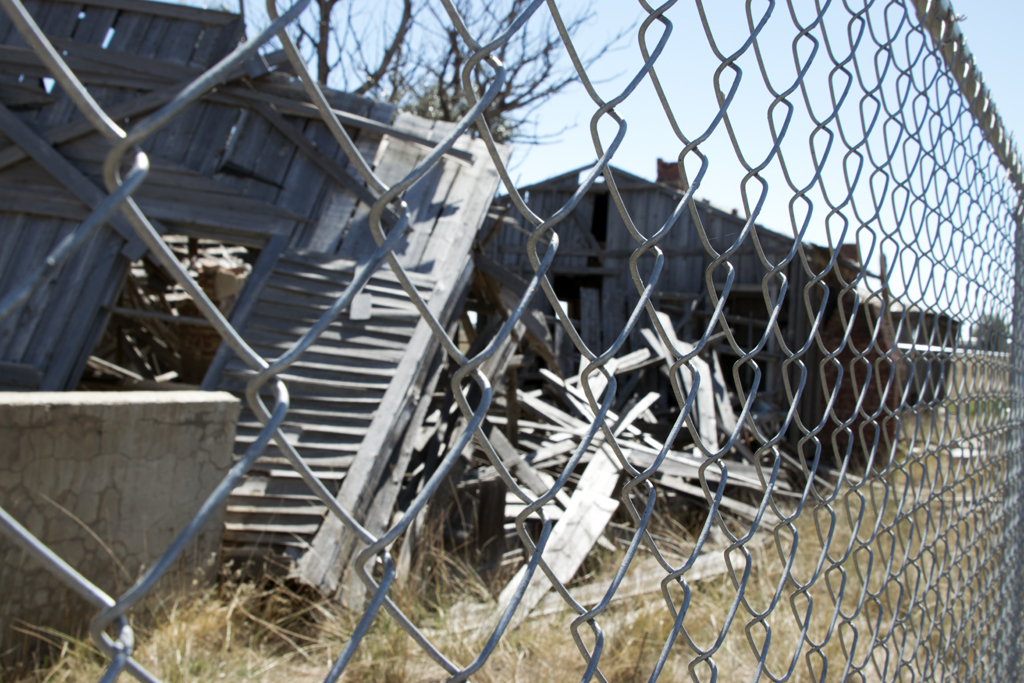 Here it is from the other side:
Here it is from the other side:
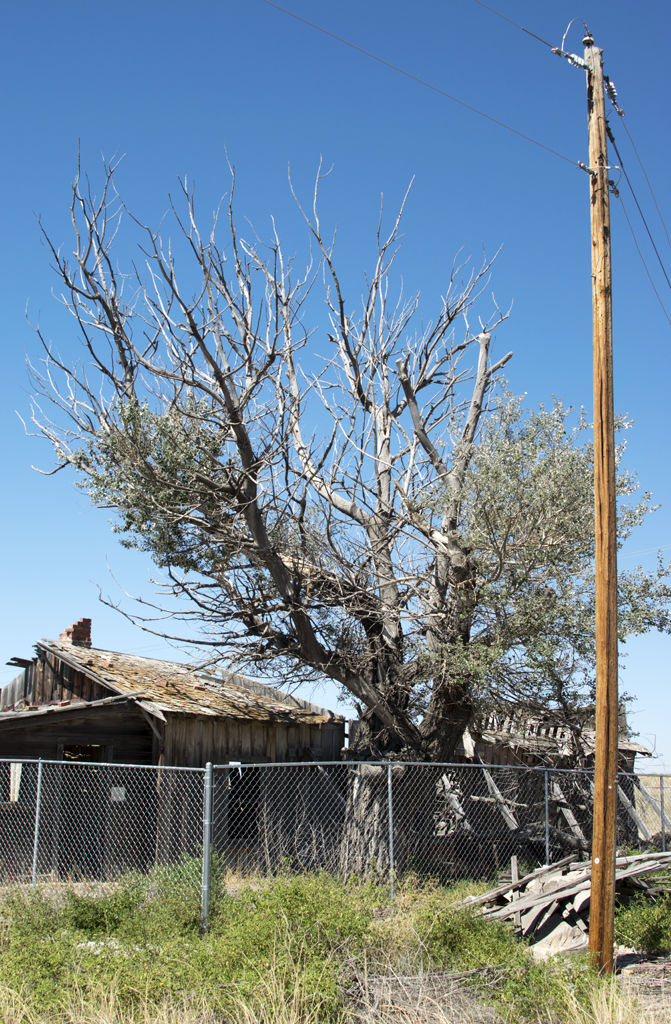
On the corner is a commemorative marker, installed in the 100-year anniversary year of Dearfield’s founding:

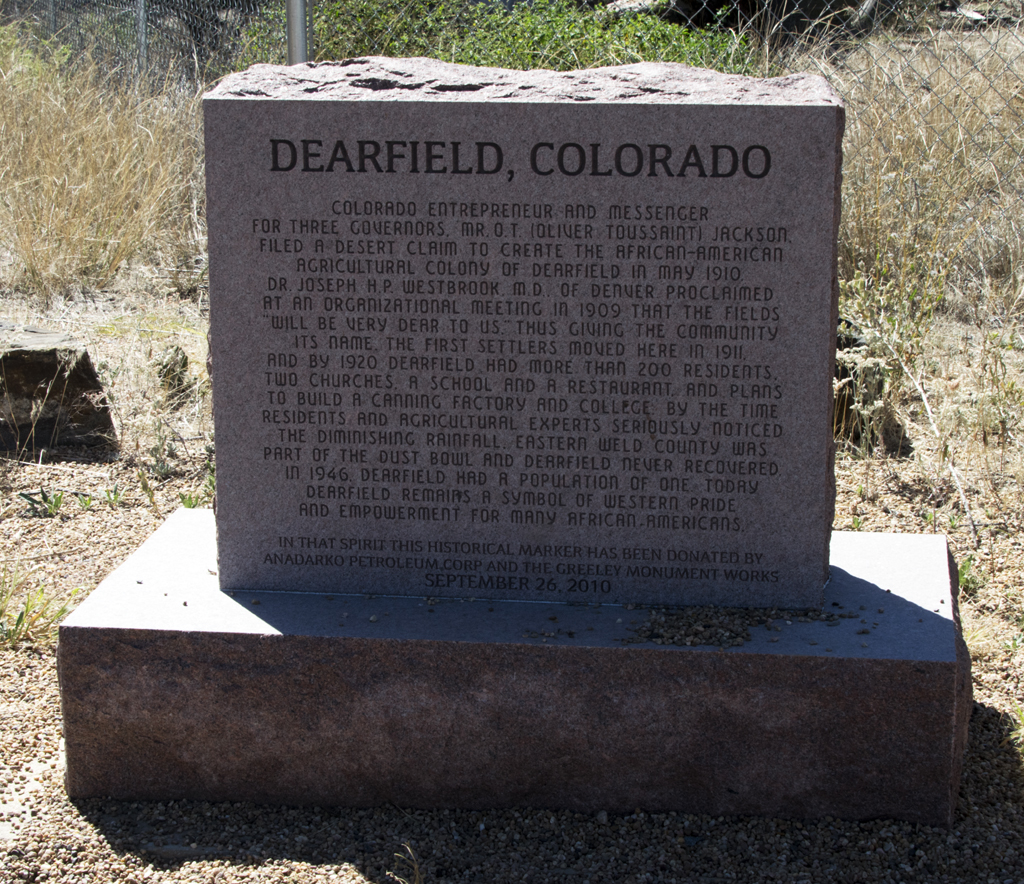
Behind the fenced-in building is another ruined building:
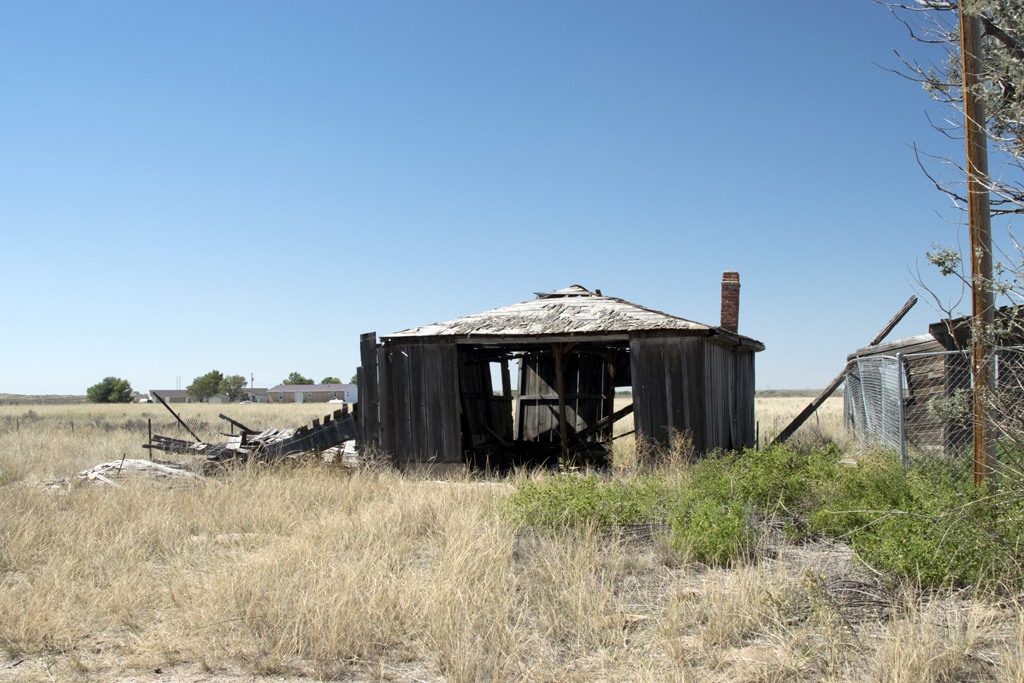
And across the side road is what I think must have been the diner (total guess):
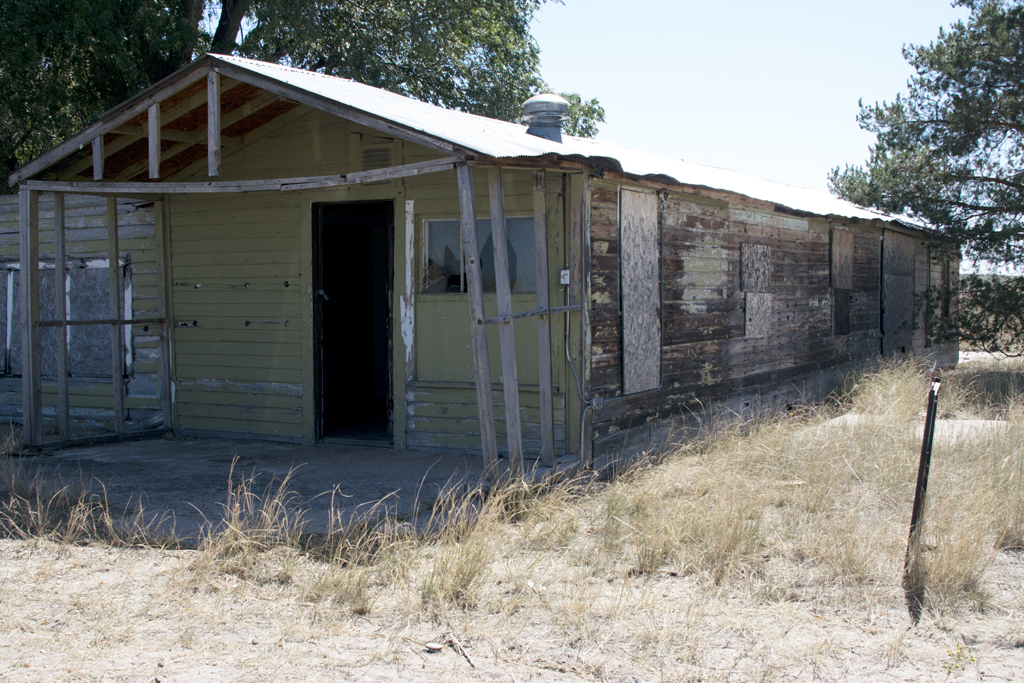
It was open so I stepped inside, startling some swallows. I sort of expected tons of graffiti and maybe some homeless person’s belongings, but it was relatively bare.
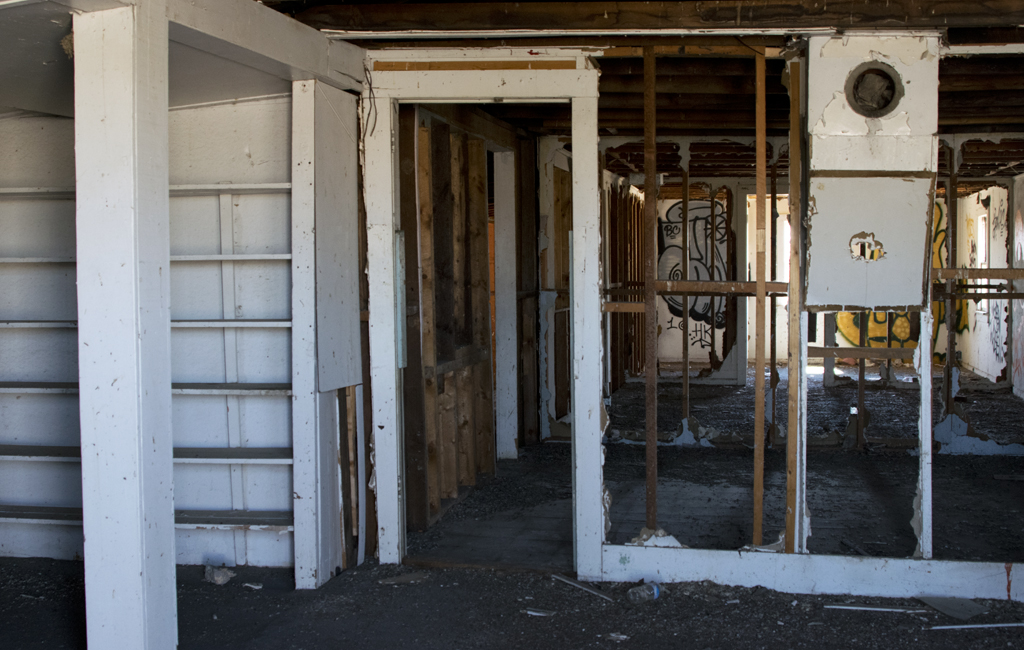 At least the lock held:
At least the lock held:
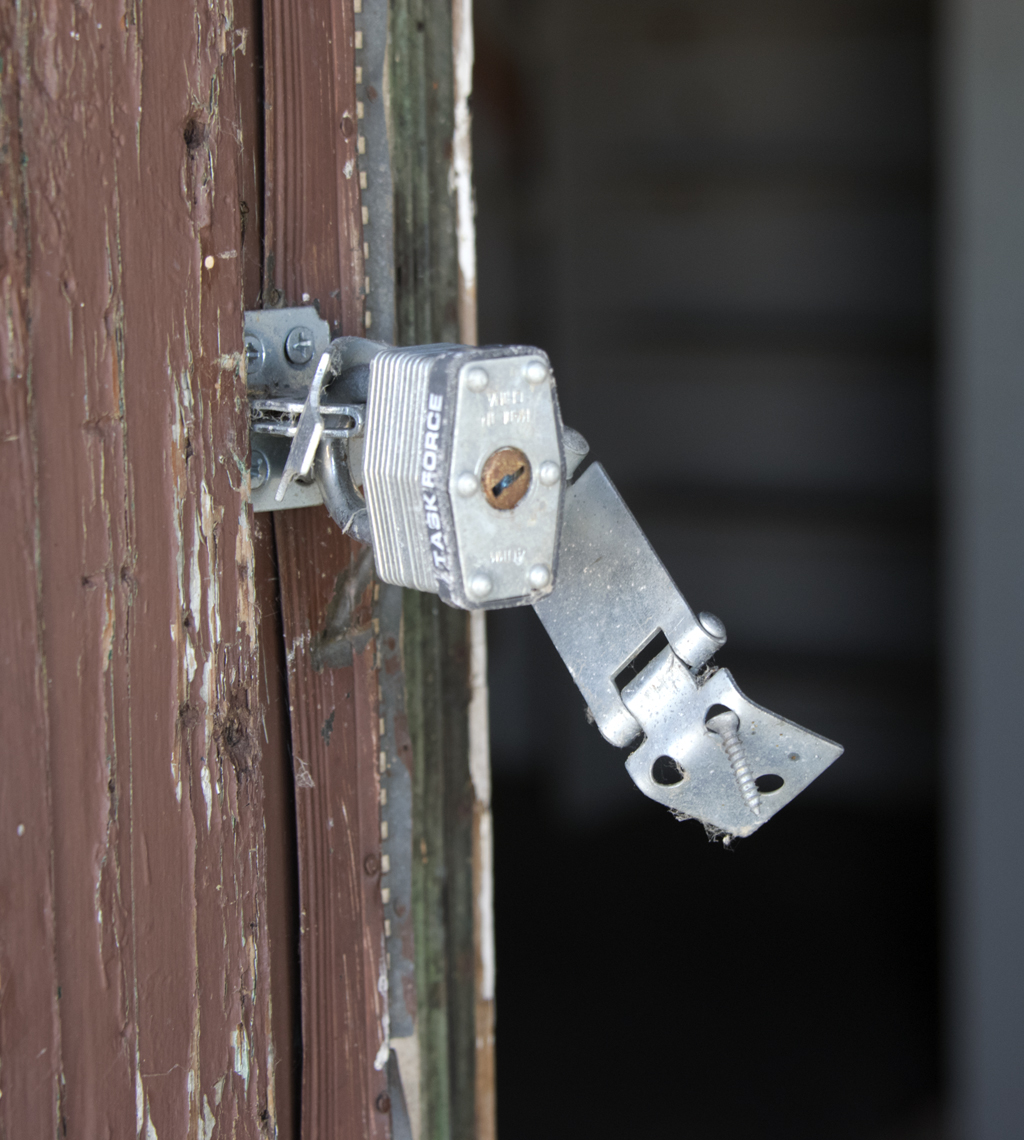
And I kind of like this photo of its window: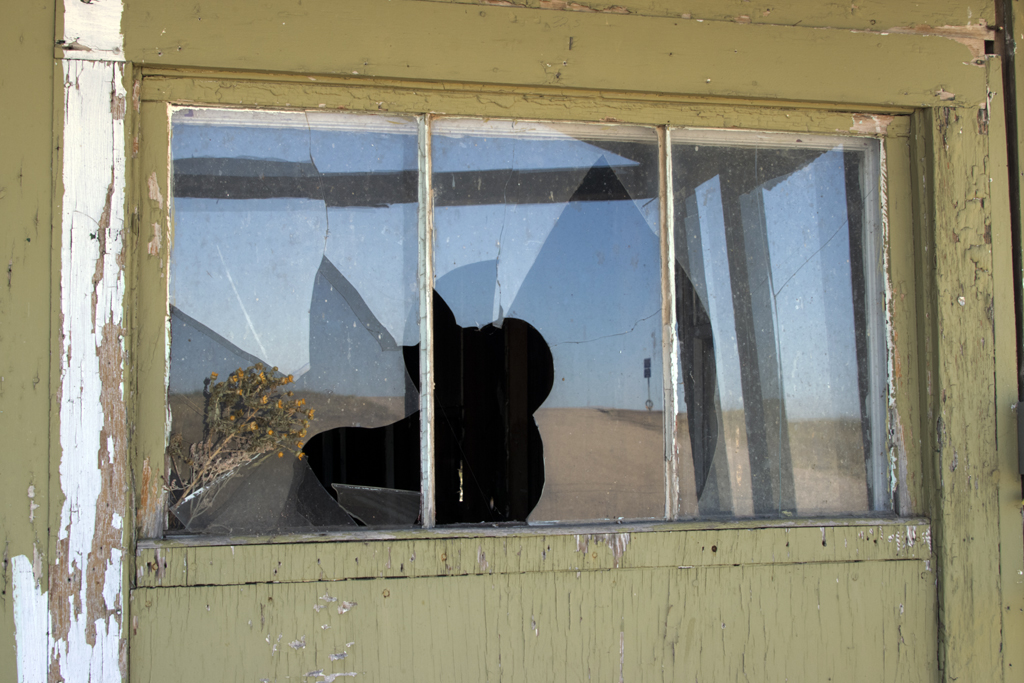
Behind it is another shed or garage or both:
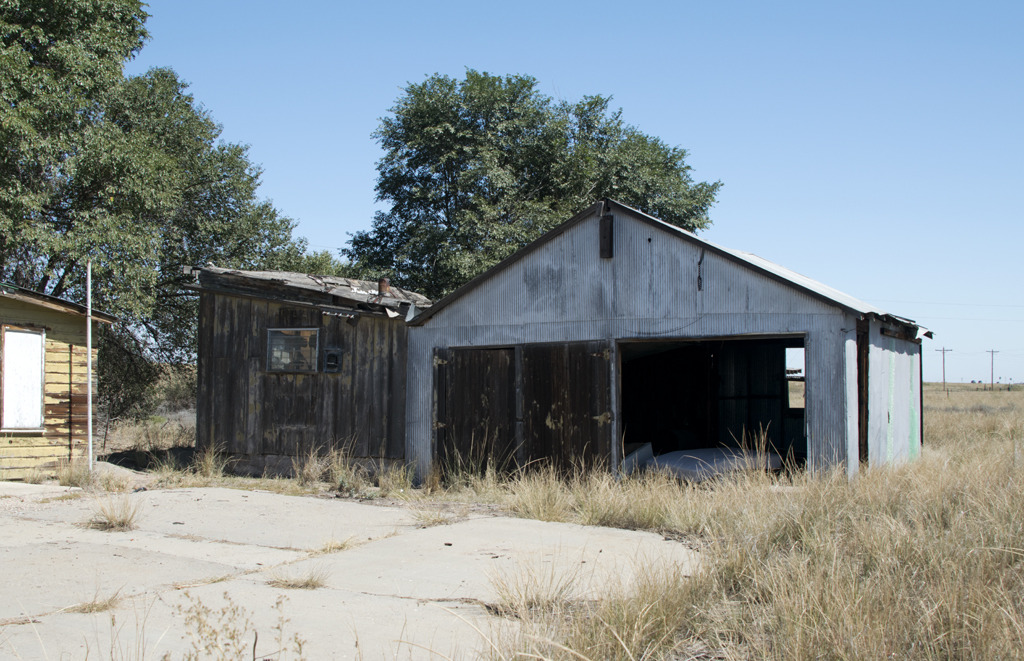
It was very interesting to poke through this place, knowing its history. I’ve seen reference to a restoration project, but nothing seems to have been done except the fence and marker. I’ve written to the Black American West Museum and Heritage Center in Denver, who is named as the restoration project sponsor. I asked what, if anything, is being done for Dearfield and if they have a timeline. I’ll let you know what they tell me.
Eventually I got very thirsty and ended my photo session. To be honest, it didn’t take long to photograph this little corner. And there is always a concern about rattlesnakes around here, so I didn’t venture too far inside the buildings. I did manage to find this among the dry prairie grass, which made me happy to see the cactus fruit:

Life just always finds a way, doesn’t it?
Photo for No Apparent Reason:
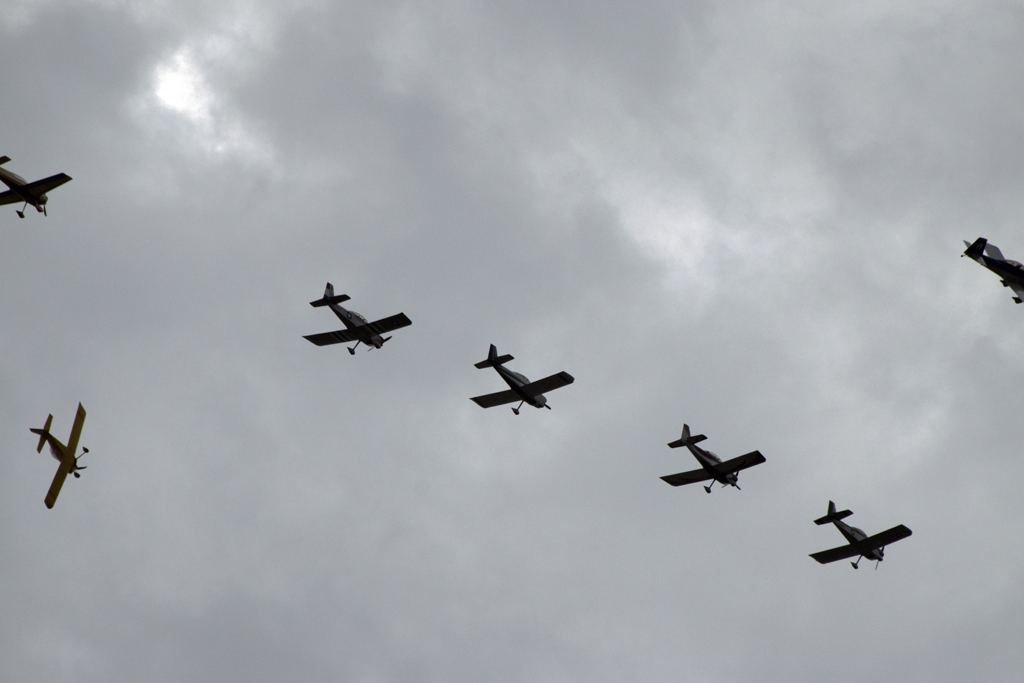
Is it possible to bring the town back to life with people & purpose… Keep it alive with the growth of Hemp Farming..?